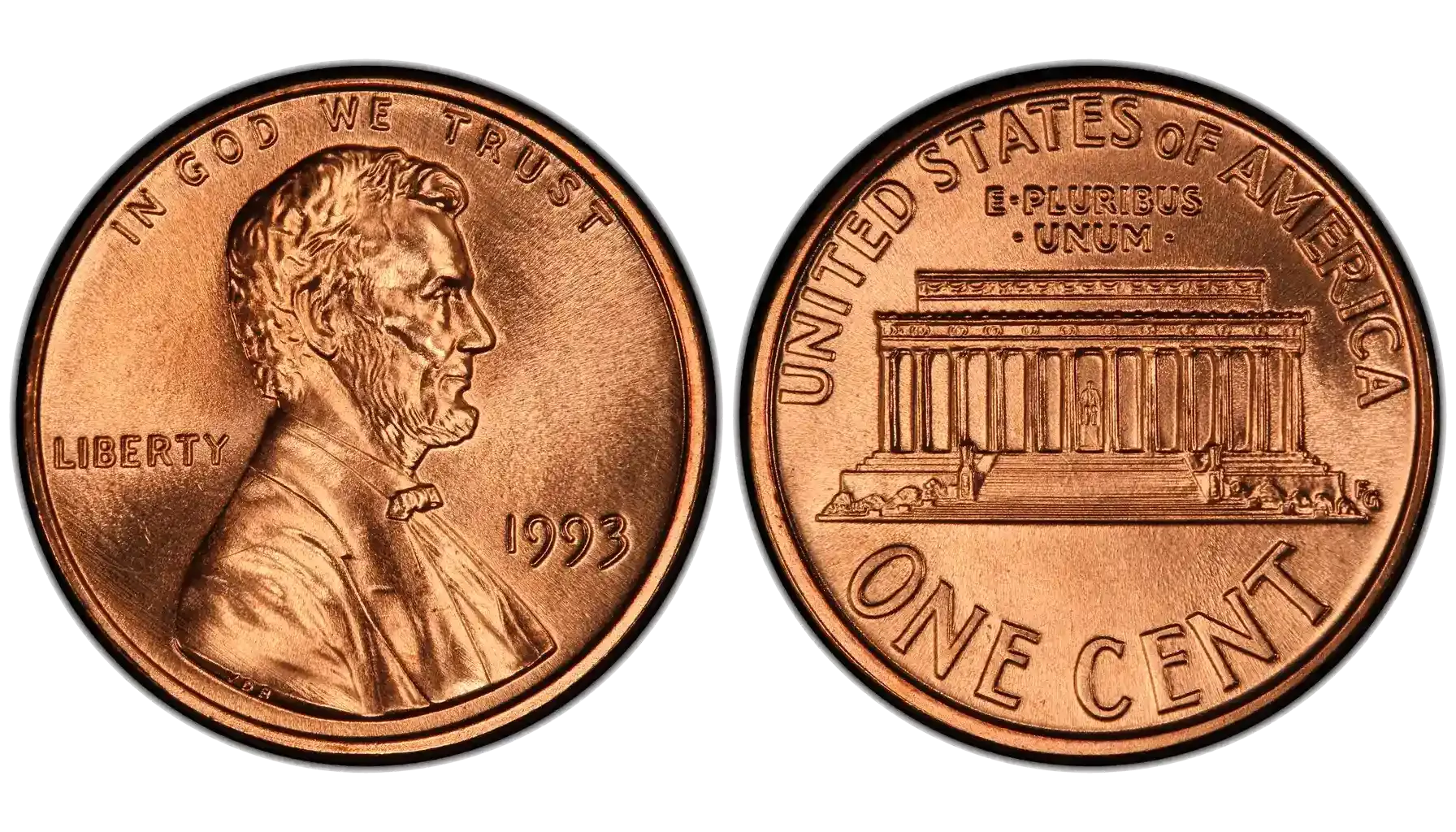Contents:
- A Closer Look at the 1968 Roosevelt Dime
- What Is a 1968 Dime Worth Today?
- The 1968 Dime Without a Mint Mark (Philadelphia)
- Discovering the 1968 D and S Mint Dimes
- Error Coins – 1968 Dime Error List and What to Look For
- Spotlight on the 1968 No-S Proof Dime: Rare and Valuable
- Silver-Clad & Transitional Composition in the 1968 Dime
- Strange but Real: 1968 Copper and Gold Dimes
- Should You Keep or Sell a 1968 Roosevelt Dime?
The 1968 Roosevelt dime marked a turning point in U.S. coinage. The Philadelphia Mint struck every dime that year without a mint mark. The Mint also introduced a transitional silver-clad composition alongside the last pure-silver proof issues. Collectors prize this era for its mix of old and new metal types.
This guide shows you how to spot key features that affect value. Learn to identify the no-mint-mark strikes and the silver-clad proofs. Watch for rare errors and uncirculated survivors that command premiums. Use these details to check value of coins.
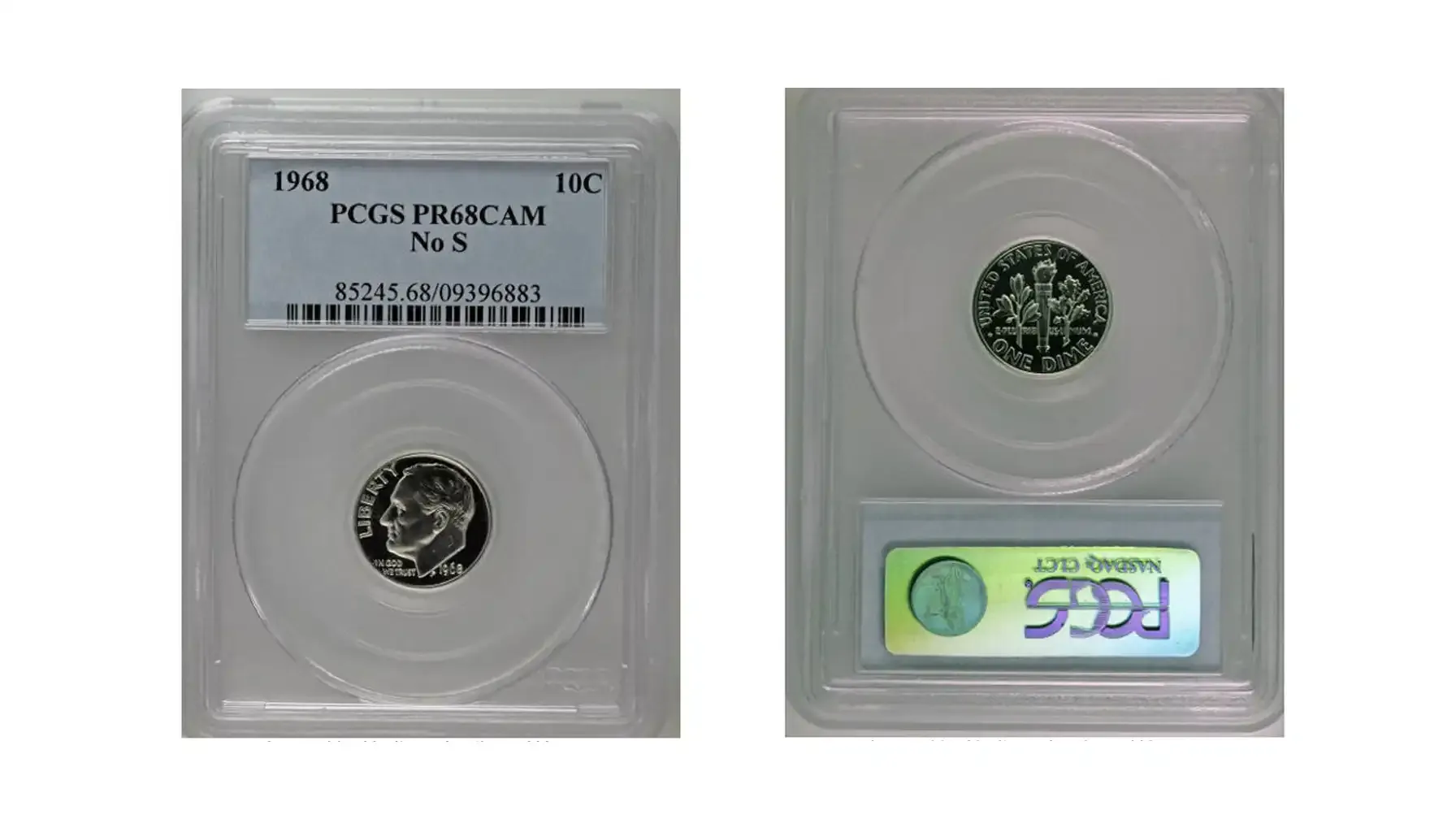
A Closer Look at the 1968 Roosevelt Dime
The U.S. Mint issued the 1968 dime during a key shift in metal content. The Mint struck every dime 1968 without a mint mark at Philadelphia. They balanced tradition and change by offering both silver-clad proofs and copper-nickel business strikes. Collectors note this mix when studying the series’ history.
The 1968 Roosevelt dime keeps the classic design of Franklin Roosevelt’s portrait on the obverse. The reverse shows a torch flanked by an olive branch and an oak branch. Designers refined the details to suit the new silver-clad planchets. Each coin reflects the era’s blend of artistry and economy.
Collectors track the dime 1968 value by condition and metal type. High-grade silver proofs command premiums at auction. Uncirculated business strikes still trade near face value but can climb in rare grades. Understanding these factors helps you spot standout pieces.
3 reasons collectors pay attention to 1968 coins
They mark the last year of no-mint-mark business strikes.
They introduce a new 40% silver-clad proof composition.
They honor FDR’s legacy with a unchanged, iconic design.
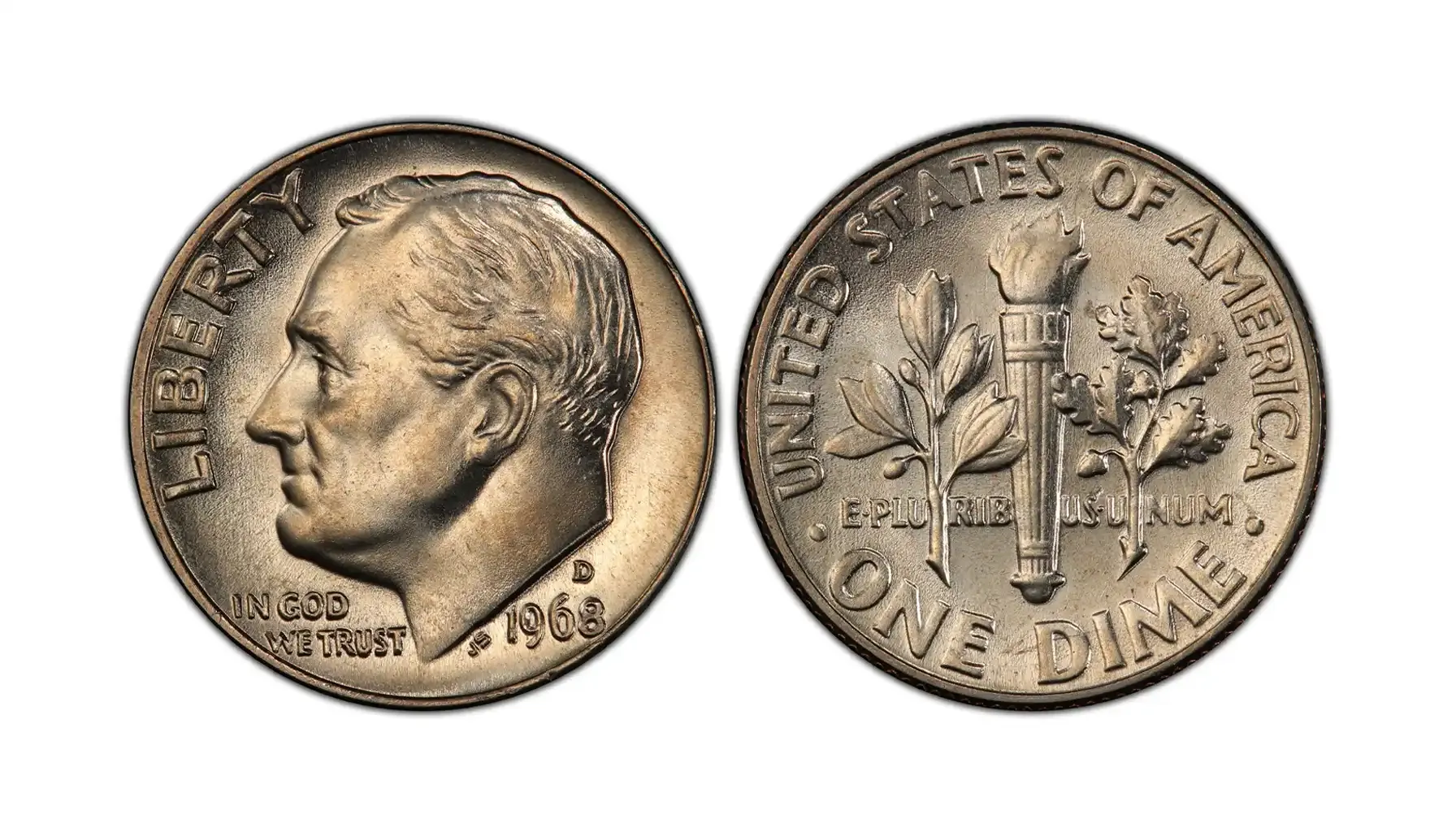
What Is a 1968 Dime Worth Today?
Circulated examples hold only face value plus a small markup. Most traded pieces carry light wear and show a dull gray finish. Dealers list them for about $0.10 to $0.25. That gives you a baseline 1968 dime value.
Uncirculated coins in the MS60 grade display full mint luster with light bag marks. Market guides price them around $0.50 to $1. This shows how much is a 1968 dime worth in entry-level Mint State.
Collectors prize MS63 and MS65 for stronger luster and clean surfaces. You can find them priced from $1.50 to $7 on auction and retail sites. Always check 1968 dime value today before you buy or sell.
Top-tier survivors at MS66 reveal sharp detail and full bloom. They trade at $12 to $15 or more when certified by major services. That helps answer what is a 1968 dime worth in peak condition.
Grade | Price Range |
Circulated | $0.10 – $0.25 |
MS60 | $0.50 – $1 |
MS63 | $1.50 – $2.50 |
MS65 | $5 – $7 |
MS66 | $12 – $15 |
4 grading terms you should know
Good (G) – shows heavy wear with major design details worn smooth
Very Good (VG) – shows moderate wear but retains clear outlines
Fine (F) – shows light to moderate wear with most details sharp
Mint State (MS) – shows no wear and full original luster
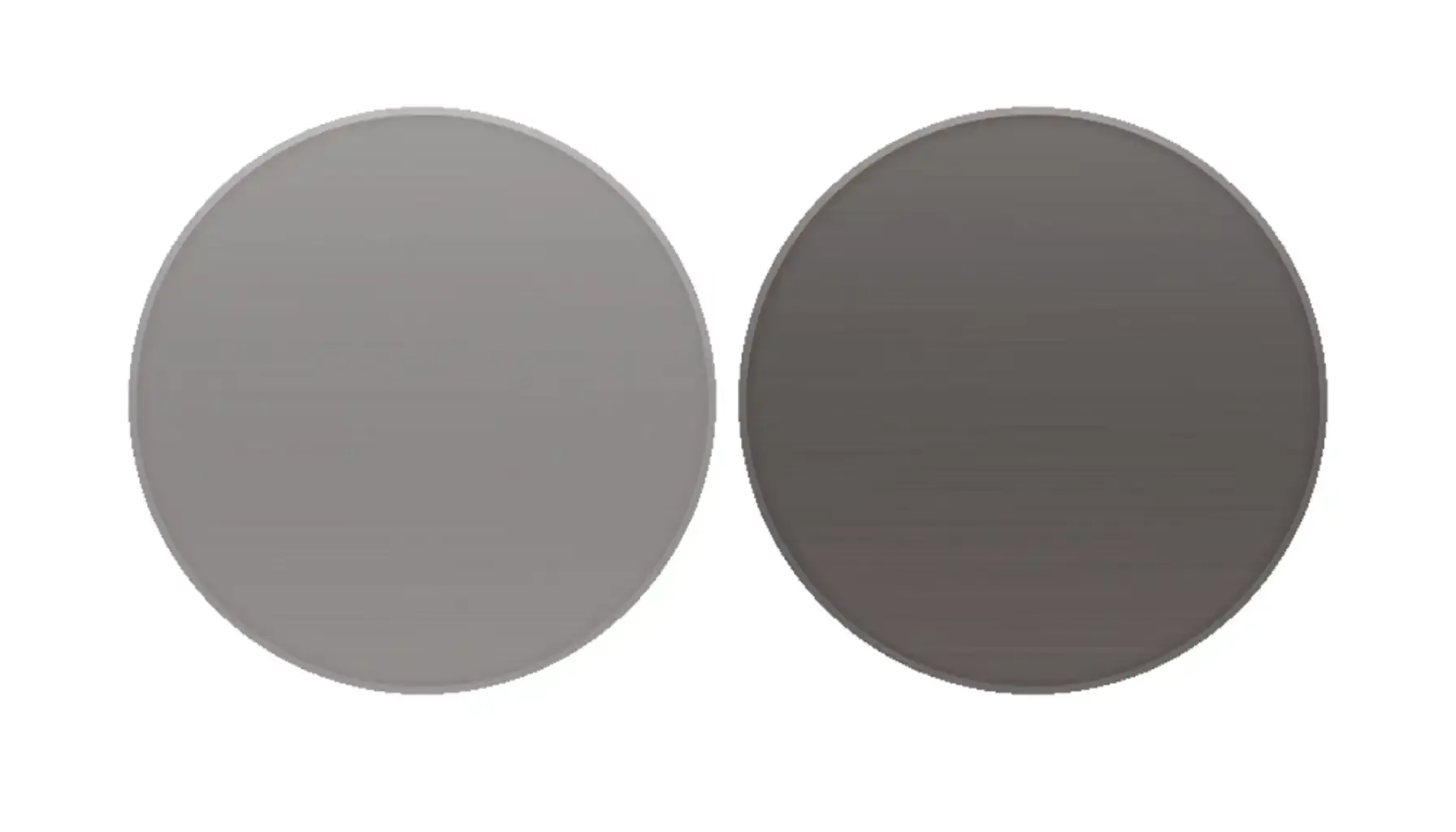
The 1968 Dime Without a Mint Mark (Philadelphia)
The Philadelphia Mint released the 1968 dime no mint mark for its business strikes. Collectors label these coins as the 1968 no mint mark dime. They carry Roosevelt’s portrait and torch design. These coins reflect the era’s transition to silver-clad planchets.
Many traders track the 1968 dime no mint mark value closely. Dealers list low-grade examples near face value. Mid-grade coins trade for a few dollars. Top uncirculated coins can command extra premium.
You may wonder, where is the mint mark on a 1968 dime. Philadelphia strikes carry no mint mark above the date. That blank spot gives them a clean look. Denver and San Francisco coins show a D or S instead.
Collectors favor these coins for their history and availability. They offer a key look into 1968 production. They also make great examples for entry-level collections. Many collectors still hunt for high-grade survivors.
3 things to check for on a no-mint-mark
Full date clarity: Ensure “1968” is sharp and fully struck
Reeding depth: Count the reeds and check for even cuts
Field luster: Look for smooth, original mint shine on both sides
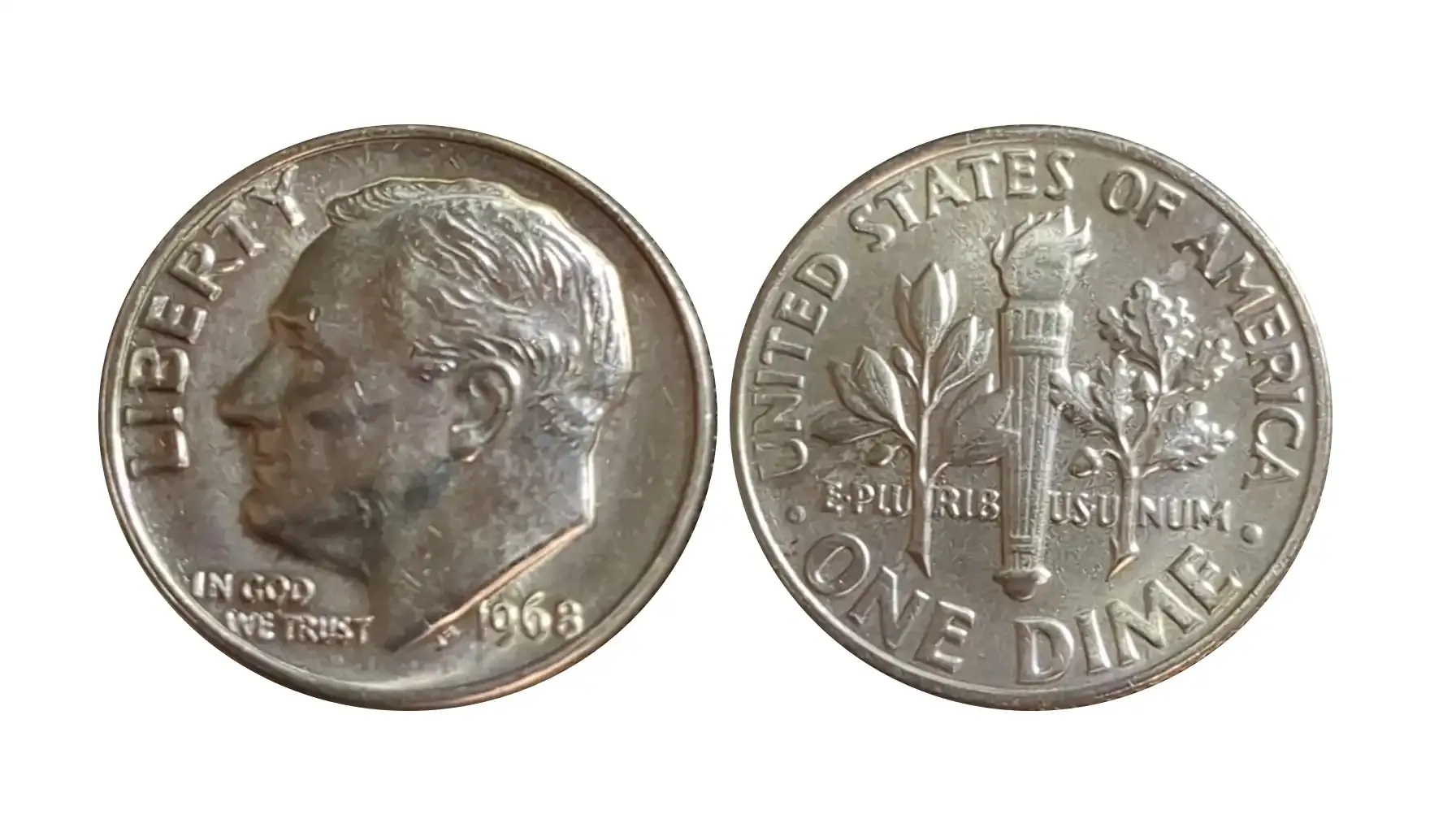
Discovering the 1968 D and S Mint Dimes
Denver struck the key business dimes in 1968. The 1968 d dime carries Roosevelt’s portrait and a full reeded edge. Mint records show millions of these copper-nickel clad strikes. Collectors often start their sets with this common issue.
Values for the Denver business strikes vary with grade. The 1968 D dime value begins at face value in circulation. Uncirculated MS60 coins trade around $0.50. Higher grades push into the $5–$7 range. That gives a clear view of how much is a 1968 d dime worth at each level.
The San Francisco Mint struck special proof dimes in 1968. The 1968 S dime proofs carry a 40% silver-clad composition. Each proof shows a mirror-like finish with frosted details. Collectors prize these pieces for their sharp contrast.
Proof coins from San Francisco earn higher prices. The 1968 s dime value ranges from $3 in standard proof sets to $6 or more in Deep Cameo examples. Top specimens graded PF68 can reach $15 or above. These figures guide your buying and selling.
Collectors also call the Denver business strike the 1968 d roosevelt dime. That name highlights the iconic design and mint origin. Many guides list varieties like minor die cracks and repunched mint marks.
Mint | Mint Mark | Composition | Typical Value |
Philadelphia | (none) | Copper-nickel clad | $0.10–$0.25 (circulated), up to $7 (MS65) |
Denver | D | Copper-nickel clad | $0.10–$0.25 (circulated), up to $7 (MS65) |
San Francisco | S | 40% silver proof | $3–$6 (proof), up to $15 (PF68) |
Mint mark locations explained with photos
Denver coins show a D above the date on the obverse
San Francisco proofs display an S in the same spot
Philadelphia strikes leave the area blank with no mint mark

Error Coins – 1968 Dime Error List and What to Look For
Errors on the Roosevelt dime can boost its collectibility. A 1968 dime error signals a rare misstep in the minting process. Collectors compile a 1968 dime error list to track known varieties. Each entry guides your hunt for standout coins.
Denver strikes often show unique flaws. The 1968 d dime error list highlights doubled dies on “LIBERTY” and “IN GOD WE TRUST.” Some pieces reveal off-center strikes and clipped planchets. Experts use a 1968 dime error list with pictures to confirm each flaw.
Many rely on professional galleries to identify mistakes. That visual aid helps confirm authenticity and error type. For a full error coin gallery, see the Most Valuable Dime Error List.
5 known errors found on 1968 dimes
Doubled die obverse
Off-center strike
Strike-through error
Clipped planchet
Misaligned collar
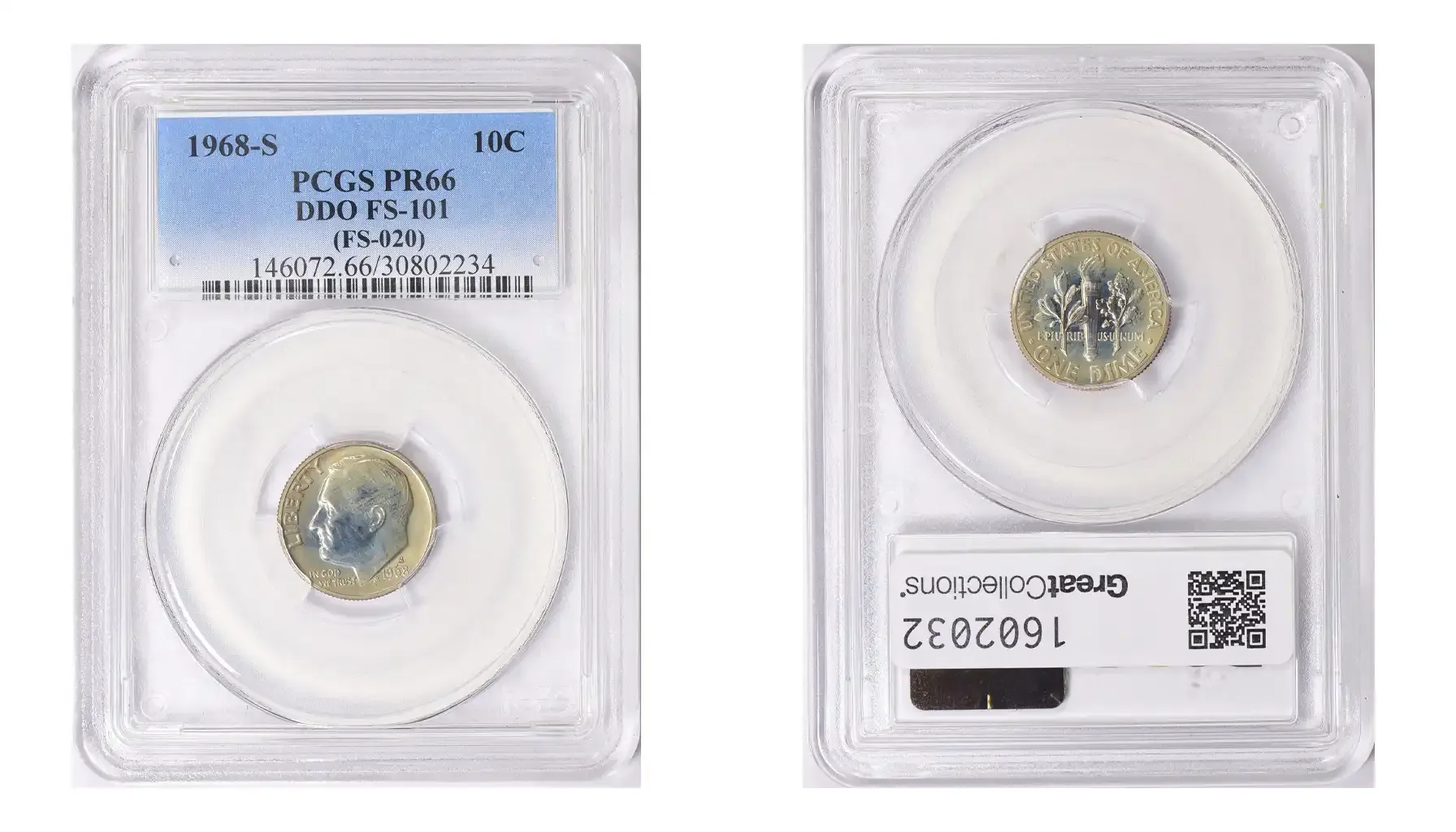
Spotlight on the 1968 No-S Proof Dime: Rare and Valuable
Collectors prize the 1968 s no-s roosevelt proof for its rarity. San Francisco struck most proofs with an “S” mint mark. A few slipped through without the mark. That makes them highly sought by specialists and rarity hunters.
The 1968 no s dime commands strong prices at auction. Dealers list certified examples from $250 to $400. Top-graded slabs can fetch even higher bids. That premium reflects their scarce mintage and collector demand.
Collectors worry about counterfeits and altered coins. They need to verify slabs and serial numbers. Provenance and grading details protect value. Always ask catalogues before asking how much is a 1968 no S dime worth in your collection.
3 ways to confirm a genuine no-S proof
Inspect the slab label and serial number against the grading service database
Examine the coin’s mirror finish for uniform cameo contrast without mint mark
Compare edge details for a clean rim without any mint mark impressions
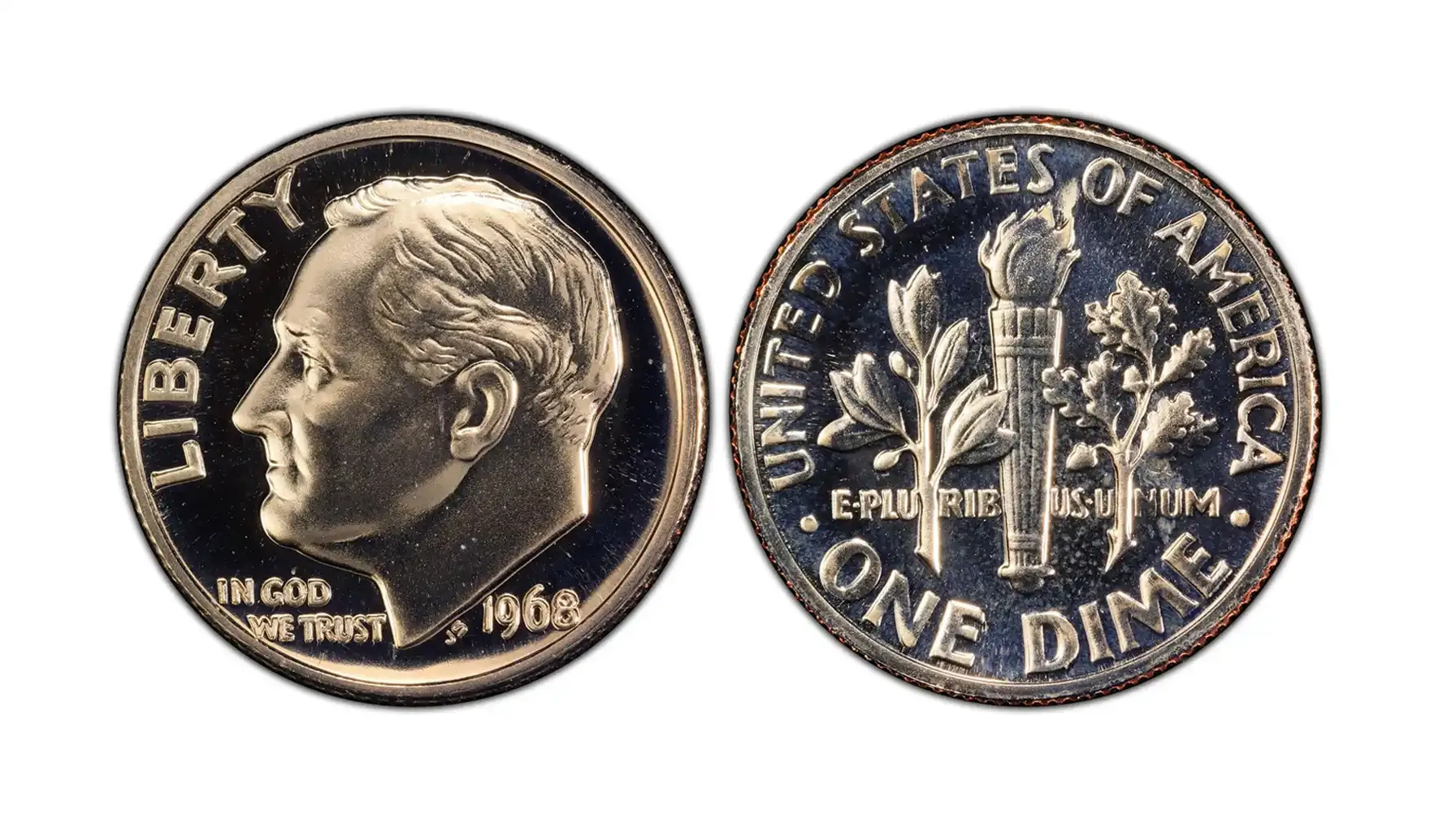
Silver-Clad & Transitional Composition in the 1968 Dime
The U.S. Mint revised its metal formula after 1964. The 1968 dime composition blends silver and copper to ease the transition. It carries 40% silver in proofs and no silver in business strikes. Collectors call this change the transitional era content.
Collectors often refer to proofs as a 1968 silver dime (implied) even though they mixed silver and copper. Those proof issues show a bright, reflective finish. Business strikes use a copper core with copper-nickel layers. That split defines the era’s coinage.
After 1968, the Mint dropped silver entirely. It adopted a copper-nickel clad that remains in use today. That standard clad carries a pure copper center under nickel outer layers. The shift marks the final step beyond the transitional era.
Type | Composition |
Pre-1965 Silver | 90% silver, 10% copper |
Silver-Clad Proof (1968) | 40% silver, 60% copper |
Copper-Nickel Clad | Copper core with 75% copper/25% nickel outer |
4 facts about 1968 metal changes
The Mint introduced 40% silver-clad proofs in 1965, continuing through 1968
Business strikes switched to copper-nickel clad in 1965, carried on in 1968
Proof dimes in 1968 remain the last U.S. dimes with any silver content
Post-1968 dimes lost silver entirely, standardizing the copper-nickel clad design
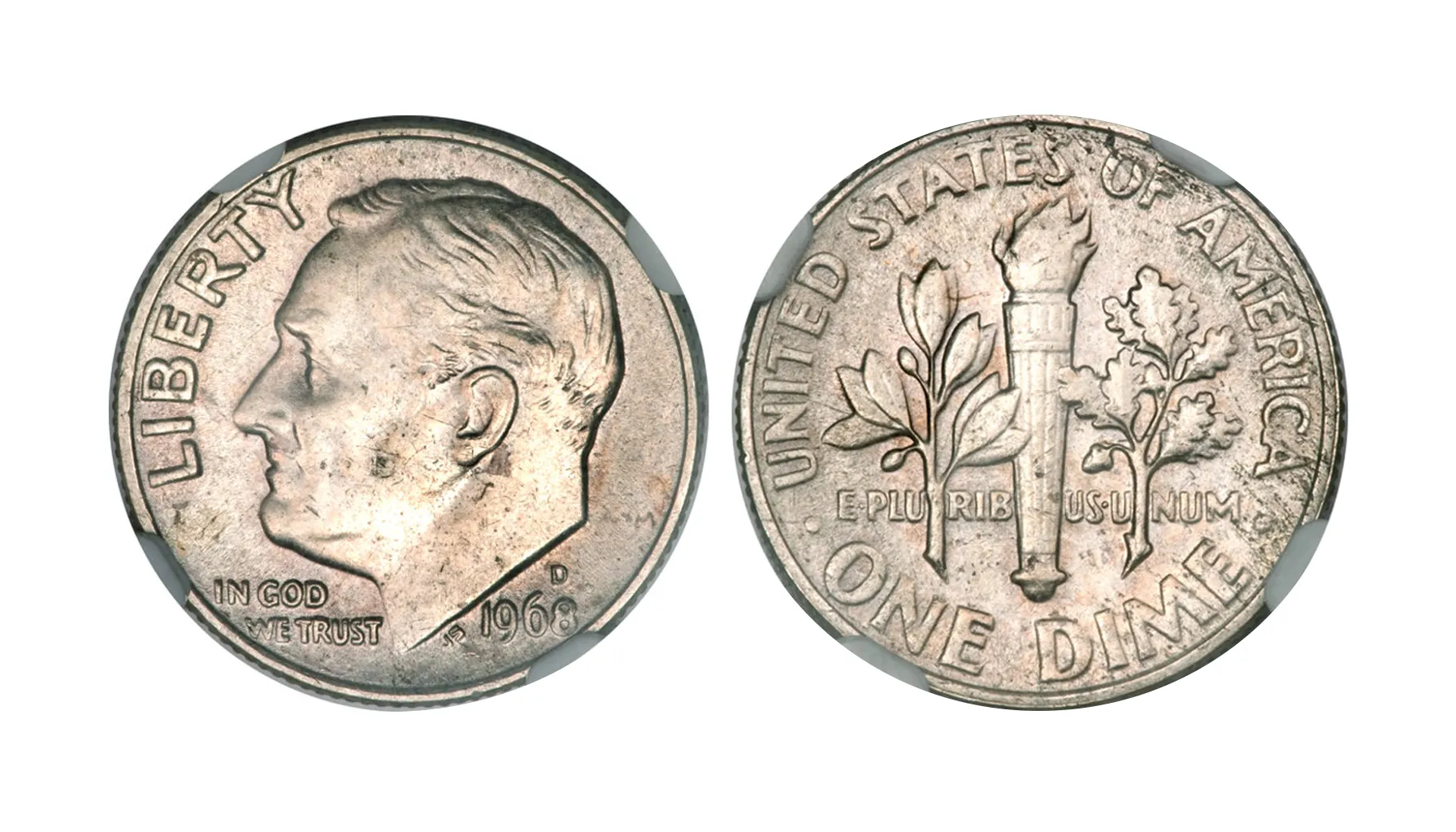
Strange but Real: 1968 Copper and Gold Dimes
Some 1968 dimes show odd colors from misfed planchets or surface treatments. You might spot a red-brown tone on a normally silver-clad coin. These oddities emerge when copper-rich blanks slip through quality control. Collectors prize these anomalies for their rarity.
The 1968 copper dime appears with a full copper hue. That look comes from pure copper planchets that entered the presses by mistake. The coin still bears Roosevelt’s portrait and reeded edge. Experts grade these pieces as true mint errors.
Occasionally, you find a 1968 gold dime that glows with a golden sheen. That effect results from electroplating or experimental surface coatings. Each example looks like a small gold token. You should verify plating thickness to confirm genuineness.
Error hunters chase these off-color dimes. They seek the subtle differences in edge and metal flow. You can add variety to your set with one of these oddballs. Always buy certified examples to ensure authenticity.

Should You Keep or Sell a 1968 Roosevelt Dime?
Get your ten-cent piece slabbed by a reputable service. A graded coin holds its condition and identifies if is a 1968 dime worth anything. Store your slab in a dry, dark place. That protects your investment.
Plan your sale after grading. Compare recent auction results to know the value of your 1968 dime. Get an independent appraisal if you need extra confidence. Then follow the checklist below before selling.
3 things to check before selling
Confirm the slab’s certification and grade number
Review current market prices on multiple sites
Inspect the coin’s surface for nicks or cleaning marks
Choose a trusted marketplace. If you own a no-mark piece, learn how to handle coins with no mint mark in your listing. Include clear photos and grade details for buyers. To track prices, try the Check Silver Dimes Value tool.

